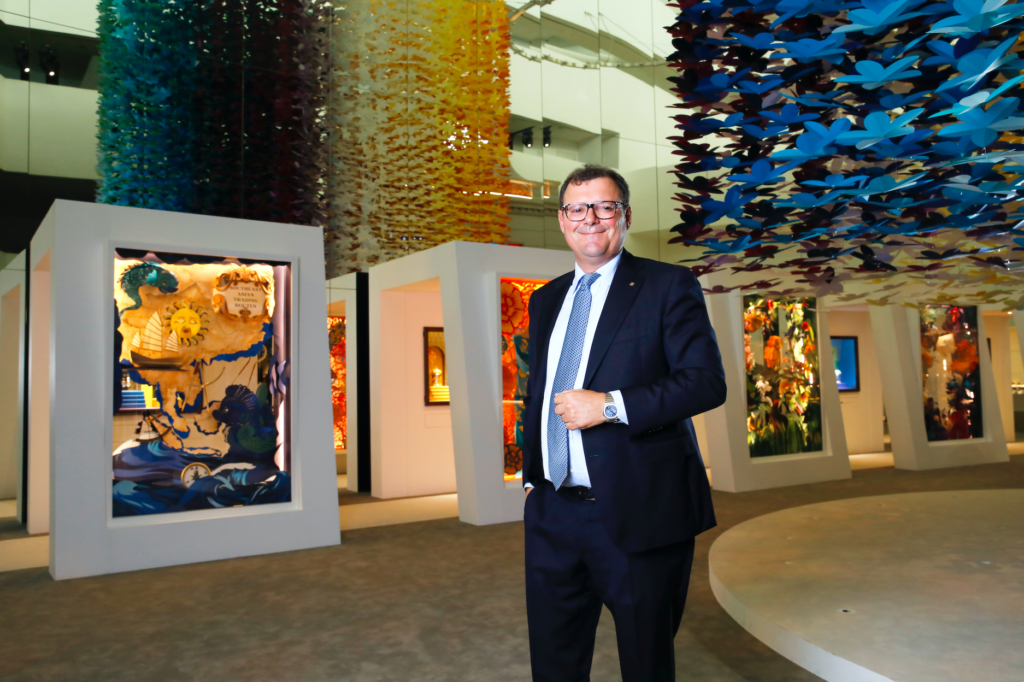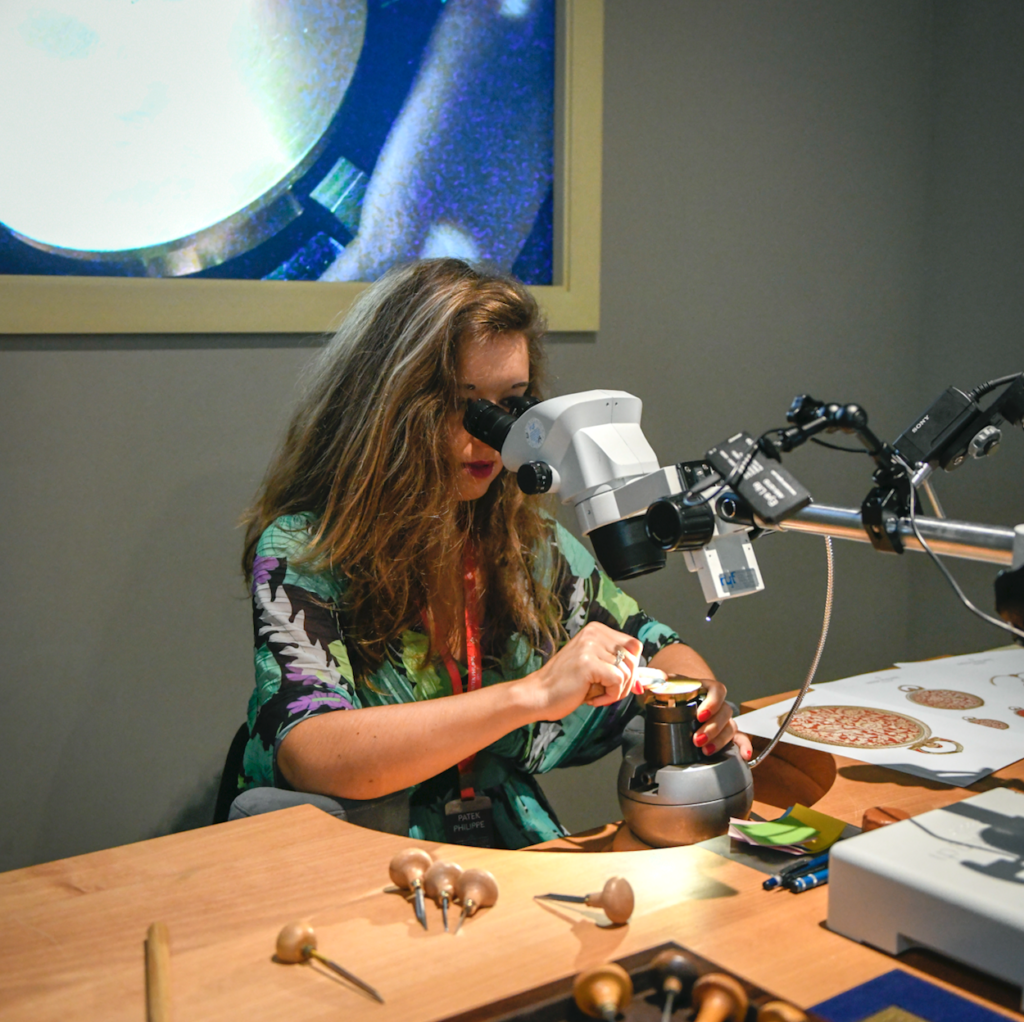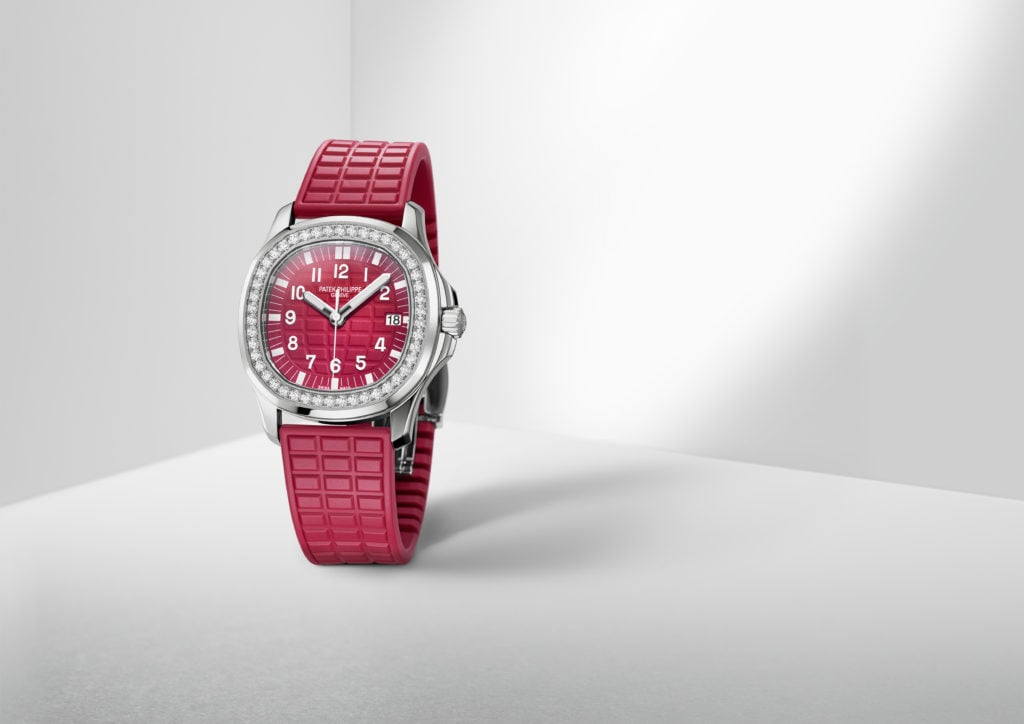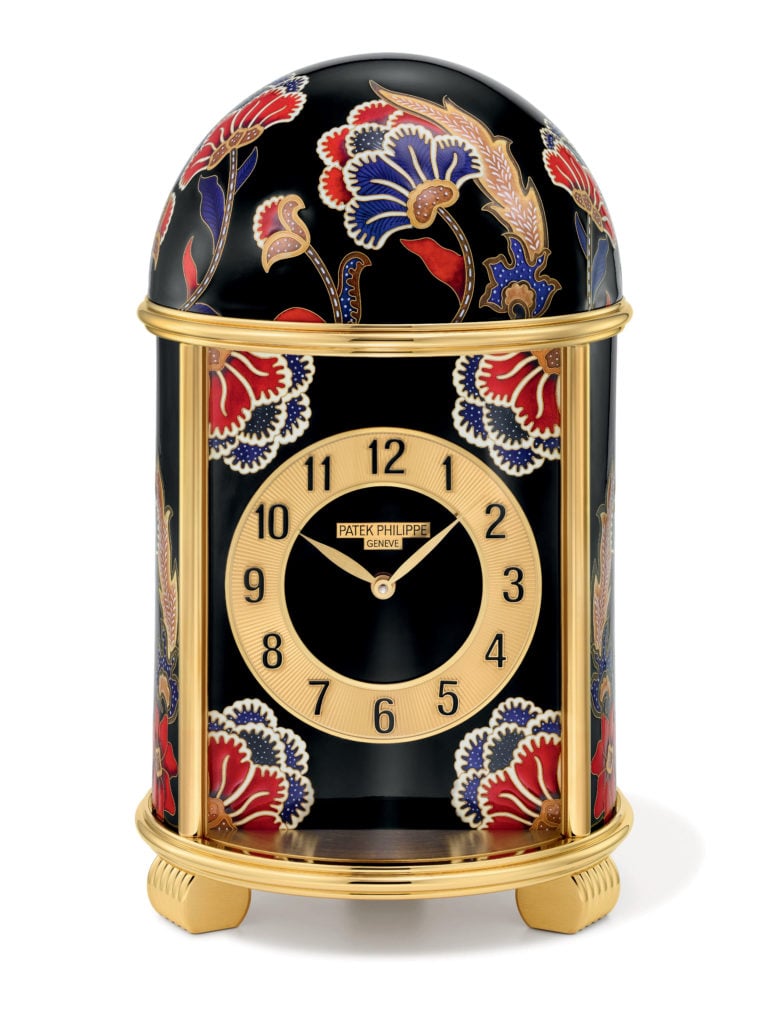Art World
In Singapore, Patek Philippe Brings Its Grand ‘Watch Art’ Exhibition to Its Biggest Audience Ever
The Swiss brand brings its most exceptional timepieces, and its 180-year-old culture of watchmaking, to Southeast Asia.

The Swiss brand brings its most exceptional timepieces, and its 180-year-old culture of watchmaking, to Southeast Asia.

Nazanin Lankarani

The Swiss watch company Patek Philippe is celebrating its 180th birthday this year with the most spectacular edition of its “Watch Art Grand Exhibition” series to date.
“This is going to be a nightmare for me,” said Thierry Stern, president of the Geneva-based watchmaker at a preview for the show in late September, at the Marina Bay Sands Theatre in Singapore. “We already have some 32,000 people pre-registered online to see this exhibition. That means we can expect at least double that number.”
Notwithstanding his startling opening statement, Stern was visibly pleased with the numbers that foretold a resounding success for the fifth edition of Patek Philippe’s traveling exhibition. Based on that estimate, the Singapore show, which opened on September 28 and runs through October 13, is expected to bring in even more visitors than it did in London at the Saatchi Gallery (with 42,500 visitors) in 2015, and in New York (at Cipriani 42nd Street, with 27,500 visitors) in 2017.

Thierry Stern, president of Patek Philippe. Photo courtesy Patek Philippe.
Over the years, the show has grown by leaps and bounds, especially if one takes into account its beginnings: a 1969 exhibition of historical watches in Texas done in collaboration with a local retailer, which was followed by a small museum show in 1995, titled “The Legendary Watches of Patek Philippe.” These early shows paved the way for the first Watch Art Grand Exhibition in Dubai in 2012, and then in Munich in 2013.
This year’s exhibition covers 18,000 square feet of space, and includes over 400 unique timepieces, both modern and vintage, some of which are on loan from the Patek Philippe Museum in Geneva. The exhibition, according to Patek Phillippe, is primarily a vehicle used to drive public engagement, aiming to bring the art of fine watchmaking to the masses.
That is achieved by “recreating the atmosphere of the Patek Philippe manufacture,” Stern explained, and casting a spotlight on nearly 180 years of the brand’s own history and that of other legendary watchmakers who have contributed to elevating the craft of mechanical watchmaking into an art form.

An on-site demonstration of “handcrafts”. Photo courtesy Patek Philippe.
Founded in 1839, Patek Philippe is still a family-owned business today, and produces about 65,000 timepieces annually. Stern, who took the reins of the company in 1997, was in Singapore along with his family for the exhibition’s opening, accompanied by his two young sons and wife, Sandrine. To dispel rumors that the company was for sale, Stern explained that he was preparing the fifth generation to step in. “One of my sons is already in watchmaking school,” he said.
At the exhibition, visitors will enjoy themed rooms that evoke the look and feel of Patek Philippe’s historic Geneva Salon, some with virtual reality displays that explain the intricacies of the watchmaker’s complicated movements made in-house. There are artisans onsite to explain, soup to nuts, how timepieces are assembled, restored, or decorated, with live demonstrations of the art of engraving, guilloché, wood marquetry, and enameling. Anita Porchet, one of the world’s premier enameling specialists, was present for the show’s opening to discuss her own contribution to the artistic craft timepieces produced by the company in the last 25 years.

The Aquanaut Singapore 2019 special edition wristwatch. Photo courtesy Patek Philippe.
“Our rare ‘handcraft’ timepieces are totally fascinating to visitors,” said Sandrine Stern, head of watch creation at Patek Philippe. “The presence of artisans here makes all the difference.”
Those who visit the exhibition might begin to understand why collectors pay astronomical sums for a Patek Philippe timepiece, or wait years for the chance to buy one of the company’s wristwatches. After all, it was Patek Philippe that produced the “Henry Graves Supercomplication,” a pocket watch made in 1933 for the American banker, Henry Graves Jr., that sold in auction in 2014 for a record $24 million—the highest price ever paid for a timepiece. And then there is the steel Nautilus reference 5711, arguably the most coveted modern wristwatch on the market today, which has a wait list that stretches well over a decade, and fetches auction prices far higher than the watch’s retail price of about $29,000.
Still, this show is not a commercial exercise, but rather geared toward showcasing Patek Philippe’s “culture of watchmaking,” which [Sandrine] Stern described as “our watchmaking know-how, defined by our continuity, precision, innovation, and independence.”

The Calatrava “Dragon” wristwatch with dial in wood marquetry. Photo courtesy Patek Philippe.
But what will surely leave Patek lovers tickled pink—or rather, red in this case—are the new special-edition timepieces produced with red accents, an auspicious color in Asia, and Singapore’s official color. Unveiled at the show, most, if not all, will be available exclusively at local or regional retailers for sale only to local residents. Among them is the new Aquanaut ref. 5167A in steel, with red details on the dial, and a red strap.
The Aquanaut is another modern model that ranks high on the popularity scale for Patek lovers, and the fact that it is limited to just 500 pieces and priced around $22,000 will surely help to generate even more interest. The rare handcrafts are also major crowd-pleasers, like the “Batik on Black” dome table clock in cloisonné enamel, enhanced with manual engraving and miniature painting on enamel inspired by Malaysian sarongs, or the limited edition Calatrava “Dragon” wristwatch, with a dial in wood marquetry, depicting a popular symbol of power in Asia.

The “Batik on black” dome table clock in cloisonné enamel. Photo courtesy Patek Philippe.
“Marquetry is an elaborate craft used rarely to decorate timepieces in such incredible detail, like the scales on the neck, the eagle-like claws, the bearded throat, or the comb of feathers on the neck and back,” a spokesperson for Patek Philippe explained. “An artisan patiently cut out and assembled 192 tiny wood parts and 30 intarsias, all hardly visible to the eye.”
According to Patek Philippe, Singapore is now one of its most important markets—a fact that explains the choice of venue. But this year is also the bicentennial of Singapore: it was 200 years ago that Sir Stamford Raffles, founder of Singapore, first arrived on the island. To mark that occasion, Patek Philippe has announced that it will donate all sale proceeds of its hardcover exhibition catalogue to Singapore’s National Museum, as a way to give back to the host country for a grand time well spent.
Patek Phillippe’s “Watch Art Grand Exhibition” runs daily through October 13, from 10 a.m.–7 p.m. at the Marina Bay Sands Theater, 10 Bayfront Avenue, Singapore.